Solar charges are amazing pieces of gear that can make a world of difference whether you’re a backwoods backpacker, outdoor blogger/influencer, or just someone who wants to make sure they can capture those special moments when traveling.
If you’re on the move a lot, especially in isolated areas, a good solar charger is often an absolutely essential bit of equipment.
The problem is that there are huge differences between good solar chargers and mediocre options. So how do you tell the two apart?
The best solar chargers have high wattage, durable & waterproof, designed for outdoor use, multiple ports, and have a reasonable weight. While there is no consensus pick for the best solar gear company, Blavor, Hiluckey, and GoerTek are all considered some of the premium solar brands to pick from.
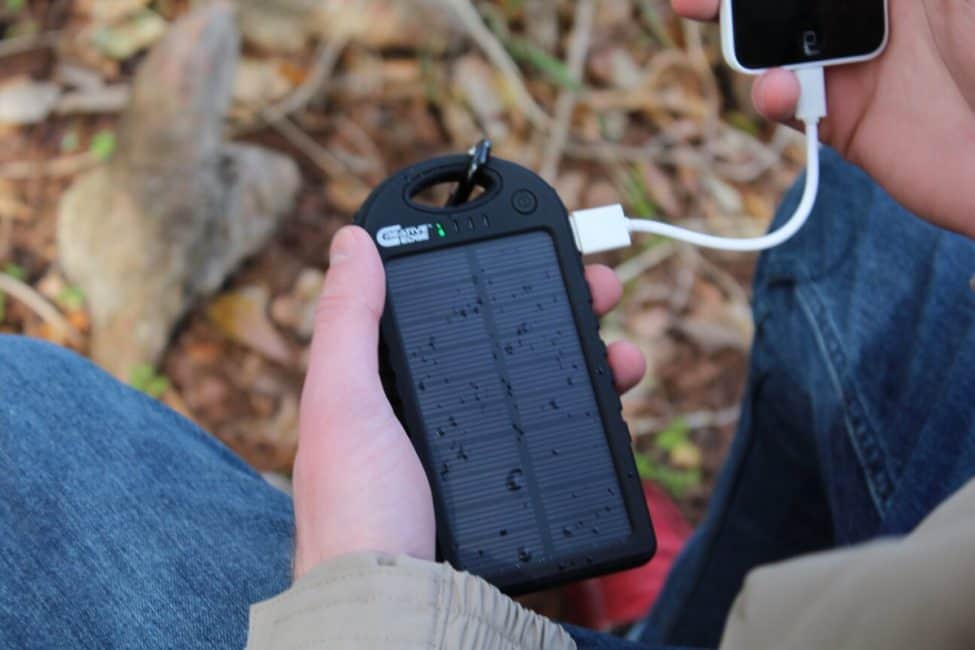
There are other smaller solar companies making incredible outdoor solar gear right now, so what should you focus on when looking for a solar charger?
Read on to find out!
#1: Pay Attention to Wattage
This is a common mistake that first time buyers of solar charger make, and it’s a big one. Volts and Watts matter and getting just one of them right doesn’t matter if you screw up the other one.
Portable solar chargers can vary based on a variety of factors, including what they’re built for. A charger built for smartphones doesn’t need the same juice as a solar charger built for laptop computers.
Both of those pale in comparison to the portable power stations that are designed to power an entire off the grid camp.
As a general rule of thumb:
- Minimum of 7 watts for a solar smartphone charger
- Minimum of 15 watts for a solar charger for iPads and laptop computers
- Ideally minimum of 20 watts for a “student” charger handling multiple electronics like laptop, multiple smartphones, etc (especially if charging more than one at once)
Keep in mind that these are minimum standards, and that the higher the wattage the faster the charge can take. Lower watt chargers at each level can work…but so slowly it may not be worth it to you.
It may also not be practical depending on your specific needs.
If you are focusing on hauling your laptop or iPad to many out of the way destinations then make sure you have a proper adapter. If you buy your charger and battery separate instead of as a package you will also need to double check to make sure they are compatible.
You may need a converter, depending on what you go with. If you want to avoid that headache, but as package.
However, if you don’t, and there are legitimate reasons not to in some circumstances, make sure you do your homework on finding the right adapter.
#2: Go with a Reliable Brand
This point can be a bit tricky because there is no “Pepsi or Coke” type dynamic in outdoor solar gear where only one or two giants are recognized as such before lumping everyone else into “the rest.”
There are several brands out there which are very high quality and do things the right way from high end materials to outstanding design and a heavy duty warranty to back their work.
There are also big up and coming names that aren’t widespread yet but make chargers that are just as good as the bigger names in solar, if not even better.
And unfortunately, there are the really cheap dropship knock-offs built in overseas factories, branded on the world’s biggest online retailer, that are cheap and sure to fail after even just a few tests.
Trust me from my experience testing multiple brands without doing research first: you don’t want a dropshipped cheap charger from a Chinese warehouse.
Online reviews are one tool, but make sure to parse them carefully and read the reviews. When you do this you can tell which are real and from actual users and which are poorly written paid reviews.
You should also check out forums related to how you’re going to use your charger. Hikers, backpackers, isolated camp workers, photographers, YouTubers – there are communities everywhere online who are going to have the same needs you do.
Make sure to find those forums and ask questions from people using portable solar chargers the exact same way that you intend to use them.
What works great for charging multiple devices over one weekend of tent camping at the lake might be completely unsuitable for a thru hiker on the AT or PCT.
A short list of good brands to start with (i.e. they’re proven to have some reliable solar gear as of this post publication):
- GoerTek
- Hiluckey
- Blavor
- SunJack
- BigBlue
#3: Check Reviews for Durability Issues
This needs to be a major factor. Performance while working doesn’t mean anything if the solar charger breaks at the slightest jostle. Whatever your needs, it’s almost certain you’re traveling, out in the outdoors, or tackling some high intensity activities.
The main thing when it comes to outdoor gear of any kind, especially gear as important as a portable solar charger, you need to know how it works in real world conditions.
Lab tests are great and all, but you need to know that when you actually need to be able to charge your gear that it will work. in real life there isn’t a reset button to hit.
This is why you should pay particularly close discussions on anything relating to the durability or real world experiences of any solar-powered chargers you are looking at potentially buying.
#4: Is it Waterproof?
This is a huge one. It blows my mind that there are some cheap solar chargers out there that aren’t waterproof and are even questionable for being labeled “water resistant.”
If you’re going to be indoors all the time what are you doing with a solar charger?
If you’re not, and you’re using these where they make sense, then they should absolutely be water resistant at the very least and it is stunning to me that there are any solar chargers out there that aren’t waterproof.
Yet here we are.
Whether you go with one of the big three solar brands mentioned earlier or another one of the great names on the market, make absolutely sure that your charger is at the very least water resistant and preferably waterproof.
This should be a standard feature. And with many of the best solar chargers it is, but you need to take extra care to make sure the options you’re looking at mention this.
#5: What Battery Options Are There?
Basically this comes down to whether you’re looking at an integrated battery or an independent battery option. These are very different styles and setups, and you want to make sure you pick one that fits your specific needs.
One of the best guides for beginners on this topic we’ve found online is on this article from REI Outdoors. Obviously this is slanted towards the hikers, the primitive campers, the backpackers, but the information is rock solid if you’re looking for a more detailed breakdown.
Basically the difference between the two solar battery systems comes down to this:
- Integrated batteries are just that: so integrated into the system that they can’t be pulled apart. It’s charger, battery, and power station in one which for many is super convenient and practical.
- Independent means that the battery can be removed. This offers far more flexibility, the changing out of batteries, or even replacement of a battery.
There are great reasons for going with either one, but you want to make sure the restrictions or benefits match what you are actually going for.
I don’t necessarily have a preference either way. Depending on what I’m doing or what my specific short and long term needs are both are viable. I’m almost always about versatility but by the same token with an integrated battery there are less points of failure.
Less opportunities for me to make a mistake that could cause an issue. And I am all about that.
#6: Weight & Size
This depends a lot on what you are using the charger for. If you are a thru hiker or long range backpacker, you know how important measuring out every single ounce is.
The variance between chargers can be huge, especially when you lump integrated batteries and independent batteries into one group. In some cases you’re using this just to keep a phone charged during a day hike.
In others you may be trying to keep multiple devices charged in an isolated work camp.
Your needs are going to vary greatly based on your needs, but it’s also important to note that the design of these chargers will vary based on what they’re designed for.
You don’t want to haul a 20 lb. pack if you are going on a thru hike. Likewise you don’t want a tiny fits in the pocket charger if you’re trying to keep multiple laptops, tablets, and phones all consistently charged.
For some people size/weight really doesn’t matter that much or it’s mildly inconvenient, but in other situations every single ounce matters.
This also goes right into another important point that goes hand in hand with these concerns:
What Style of Portable Solar Battery Charger Are You Looking For?
There are small chargers that are basically created to be attached to a backpack or sit in the sun while connecting to a single smartphone. There are also chargers that are flexible 3-panel spreads designed to be put on the back of a large pack to keep charging as you are hiking through the outdoors.
The two styles of these chargers are radically different and that means different sizes, designs, weight, everything.
What is “Perfect” for one person isn’t going to do the job for someone else. So in other words, it’s all about matching the perfect style and design of charger with what you are going to be using it for.
Some of the things to look at:
- Weight of the charger
- Ideal setup for charging
- Designed use
#7: What Do the Reviews Say?
While you should always be wary of any overall positive reviews when there are only a small handful of reviews that have actually been written, reviews can reveal a lot.
The key is not just skimming over the stars or X/10 ratings, but to actually read some of the reviews. Granted, it’s incredibly unlikely a product with 10,000 positive reviews is junk.
But that doesn’t necessarily mean that piece of gear is right for you.
Read both the most RECENT positive and negative reviews. You want to know if the quality has made a hard turn recently. You want to see what the most recent users have to say.
You may find that a lot of positive reviews end with ‘Good as long as you don’t X.” Well if ‘X’ is one of the major things you need your solar charger to do, then you just saved yourself a potentially very costly mistake.
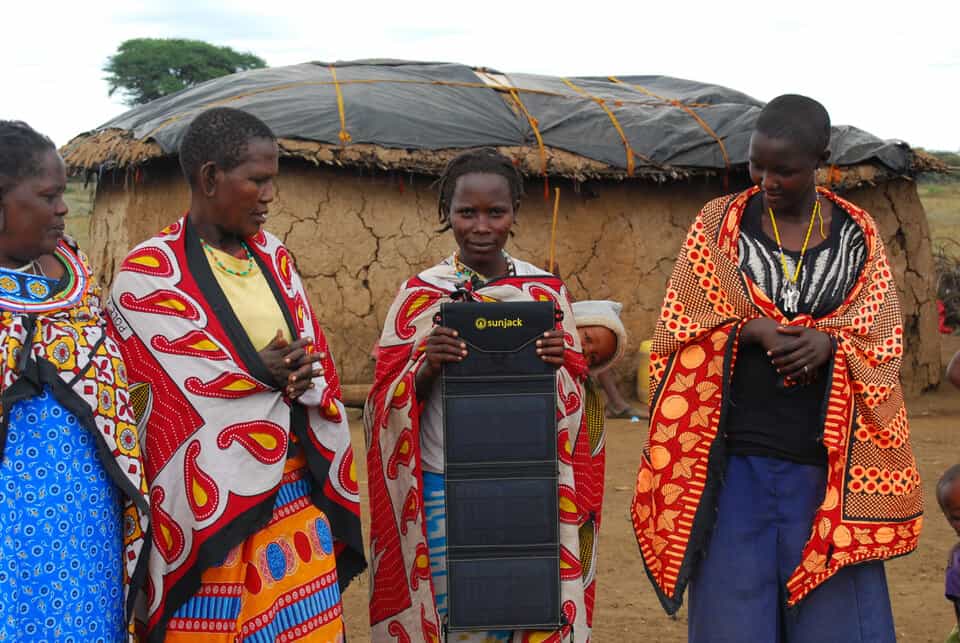
Do We Have Any Solar Charger Recommendations?
There are plenty of really good options out there, but very few that can boast over 10,000 positive reviews online and which we have not been able to break through basic wear and tear.
We have one that we recommend as being outstanding and working for 99% of everyone out there. There are also good budget and “money is no object” premium options.
So we’ll give you all three so you can make your own decision.
Our Pick: GoerTek Solar Charger
This is a favorite of a lot of different people, and it’s a choice that’s really hard to argue with. This has been a really reliable charger when I’ve used it and while I haven’t been as active outdoors as I would have liked (thank you, the dumpster fire known as 2020) the GoerTek solar charger has worked really well.
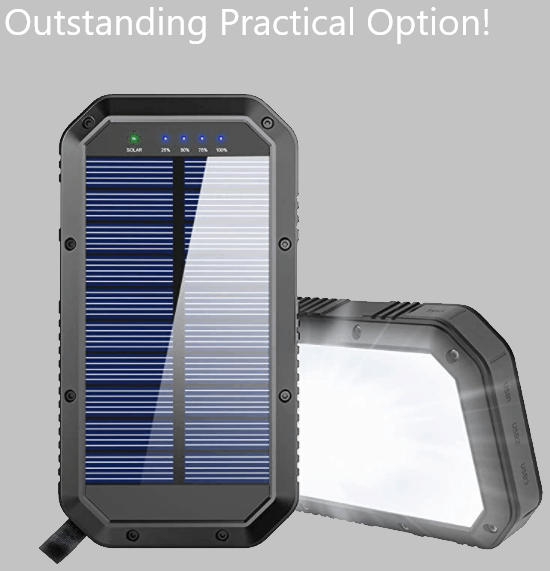
Yes, this is a product manufactured in China, which I’ve dumped on more than once, but this isn’t a cheap drop shipped product. This is actual quality work with care put into it.
I’m a big fan of GoerTek and what they bring to the table with their excellent solar charger.
However, there is one important caveat: if you need heavy duty levels of charging while out in the wild, the GoerTek might not work fast enough to satisfy you.
For most of the population, the GoerTek solar charger is enough but if you have above average needs you may want to look to one of the heavy duty models on the short table below.
It means more weight but if your needs are heavy duty, then the power output and maintenance needs to be your top priority.
So while this is good for the majority of people who don’t need any specialty uses, if you have high needs then you may need to look at the other top options I’ve outlined in the short but sweet table below.
| Solar Charger | Brief Description | Pros | Cons | Check Prices |
|---|---|---|---|---|
GoerTek Solar Charger | Quick charging, reliable solar charger for smartphones and small electronics. | Lightweight, reliable, & inexpensive. | Relatively low wattage, not specialized. | CLICK HERE FOR PRICING |
SunJack 25 Watt Solar Charger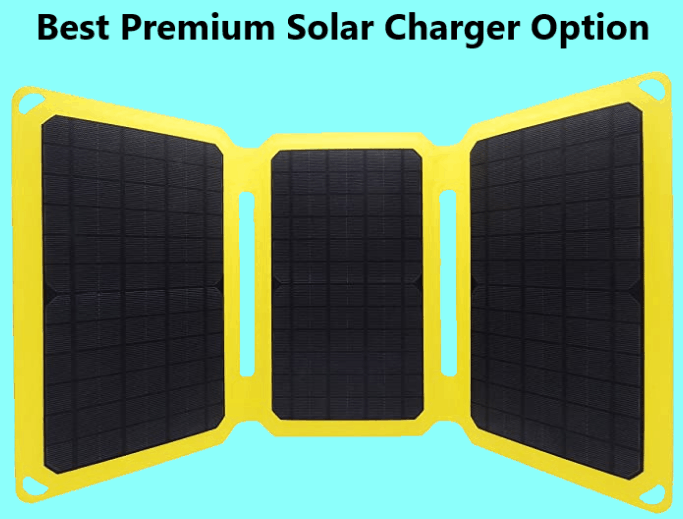 | Outstanding premium solar charger choice for fast reliable charging. | Very durable, quick charges, premium construction | Expensive, bulky | CLICK HERE FOR PRICING |
BigBlue 28 W Solar Charger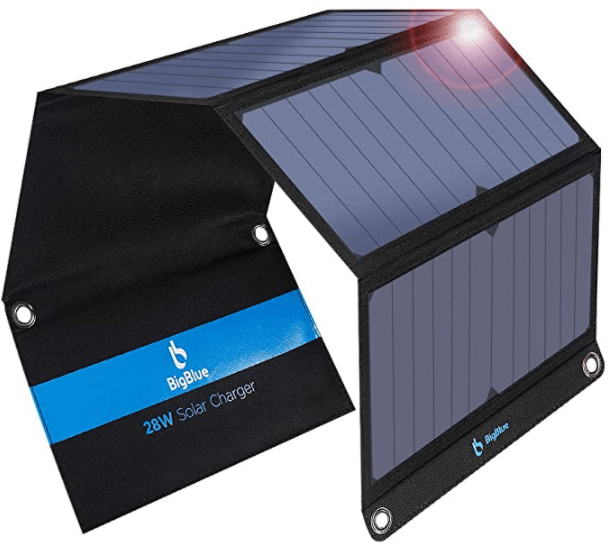 | Inexpensive option for heavy duty charging out in the field. | Solid construction, reasonably priced | Very bulky, hardest option to transport on list. | CLICK HERE FOR PRICING |
Some Final Thoughts
Finding the perfect solar charger does take a little bit of research. Good recommendations should be taken seriously. The good news is that a good solar charger is actually not nearly as hard to find as it used to be.
I remember when solar used to be more theory than reality, but those days are long behind us. There are many really high quality solar powered chargers out there.
They are tools that have created the ability for outdoor bloggers and YouTubers to take drones, digital recorders, and phones to capture beautiful remote areas that were very hard to get pictures with.
Seeing these amazing places has led to an explosion in this area, which continued to grow demand.
It’s a good natural cycle that has provided some pretty amazing tools for all of us to use in isolated outdoor areas or have some options for charging electronics when out and about!
